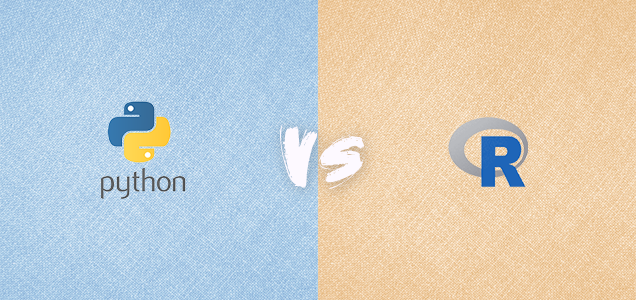By John Fernandes on Apr 07, 2025
~ 3 minutes to read
Python and R have emerged as two dominant programming languages with unique strengths and applications. Python is popular for web and software development while R is popular for performing simple and complex mathematical and statistical calculations.
This article aims to settle the debate and determine the superior language for 2025 based on an in-depth comparison of their features, performance, data manipulation capabilities, machine learning potential, visualization options, community support, industry adoption, and job market demand. Python is also compared to PHP by professionals and for all obvious reasons. You can find many good reads regarding Python vs PHP, which aim to compare the two widely used languages.
Python, renowned for its versatility and readability, has gained popularity across various domains, including web development, data science, and artificial intelligence.
On the other hand, R was explicitly developed for statistical computing and analysis, making it a preferred choice for statisticians and researchers.
A simple program to display "Hello World!" on the screen using the print() function.


In that program, we have used the built-in function print()to print the string Hello World!
Here’s a detailed difference between these languages:
It depends on many factors:
Python's versatility allows data scientists to perform various tasks beyond statistical analysis, such as web scraping, natural language processing, and machine learning.
Python offers a rich ecosystem of libraries, including Pandas, NumPy, and Scikit-learn, which provide robust tools for data manipulation, analysis, and machine learning.
Python's popularity in the machine learning and artificial intelligence domains is unrivaled. It has libraries like TensorFlow, PyTorch, and Keras, making it a preferred choice for data scientists working on complex ML projects.
Python's compatibility with other languages and frameworks and its ease of integration with existing codebases simplify the deployment and product ionizing of data science models.
Python's wider industry adoption translates into higher demand for Python data scientists, resulting in more job opportunities and career growth prospects.
Python boasts an intuitive syntax and extensive libraries enabling developers to write concise code.
With its statistical emphasis, R offers a syntax tailored for data analysis and modeling. These languages' ease of use and readability plays a significant role in determining their superiority.
Assessing the performance and speed of Python and R in different applications reveals their strengths and any recent advancements.
Python's efficient execution and optimization contribute to its impressive performance, while R's data-handling capabilities excel in statistical computations.
Python's rich ecosystem provides powerful tools and libraries, such as Pandas, for efficient data manipulation and analysis. Its versatility allows developers to handle complex datasets and perform various operations seamlessly.
On the other hand, R's dedicated packages, like Dplyr and Tidy, offer specialized data wrangling and transformation functions, making them a favorite among statisticians.
Python has become the go-to language for machine learning and data science. Its extensive libraries, including TensorFlow and Scikit-learn, offer robust frameworks for building and deploying machine learning models.
With packages like Caret and MLR, R provides comprehensive statistical modeling and analysis tools, making it popular in academia and research.
Python's versatile libraries, such as Matplotlib and Seaborn, enable developers to create stunning visualizations and charts easily. Its integration with Jupyter Notebooks facilitates interactive and exploratory data visualization.
With its ggplot2 package, R provides a grammar of graphics that allows users to create visually appealing plots and charts for effective data representation.
Python boasts a vast and active community that contributes to its continuous growth. Abundant learning resources, online forums, and extensive documentation make it easy for beginners to get started and seek help when needed.
R also has a dedicated community that actively shares knowledge and supports users. However, Python's community and resources are more extensive and diverse.
Python's versatility and applicability across various industries have led to its widespread adoption. Its use in web development, data science, machine learning, and artificial intelligence has created a high demand for Python developers in the job market.
While R remains prominent in academia and research, its industry adoption is comparatively narrower.
Considering the features, performance, data manipulation capabilities, machine learning potential, visualization options, community support, industry adoption, and job market demand, Python will emerge as the only programming language in 2025.
Its versatility, extensive libraries, ease of use, and comprehensive industry adoption make it an excellent choice for various applications. However, it's essential to consider specific requirements and domain expertise when selecting a programming language, as R remains a valuable tool for statistical analysis and research purposes.
John Fernandes is content writer at YourDigiLab, An expert in producing engaging and informative research-based articles and blog posts. His passion to disseminate fruitful information fuels his passion for writing.